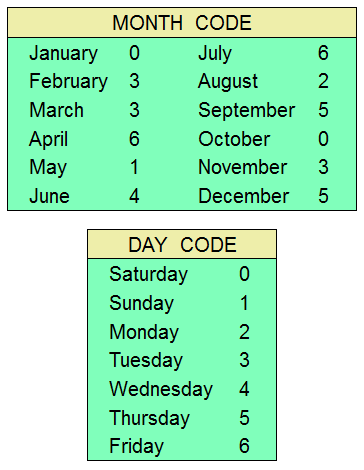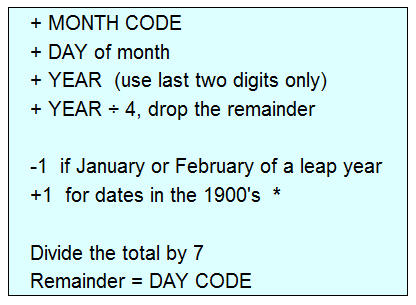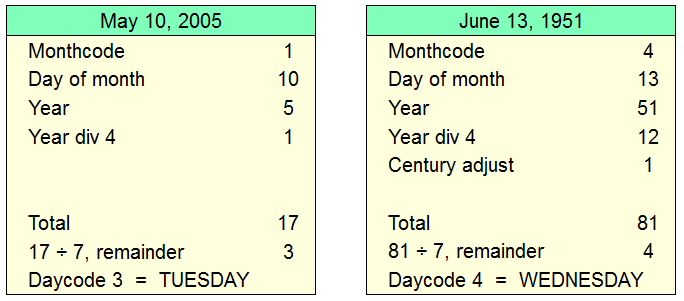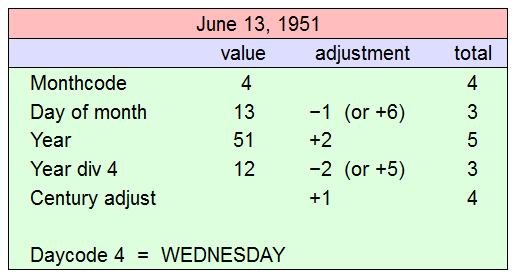
Perpetual Calendar
 |
Be Your Own Perpetual Calendar |
Calculate the Day of the Week for any Date
It's easier than you might think. A short string of digits
and a short formula are all that are required for an all-encompassing
calendar. In fact, anyone reasonably proficient with numbers
can perform this calculation in his/her head! While your
companions are fumbling for a notebook or reaching for a PDA, you
could already have the answer.
This algorithm is well-known. I even found mention of it in
an ancient Funk & Wagnall Encyclopedia. I merely offer
suggestions for streamlining the method for ease of calculation.
The months and weekdays have serial identifications as follows:

For each month, its code simply reflects the prior month's
code, plus the number of days in the prior month in excess of
28. January has 31 days, or 28+3; therefore,
February's code = January's code + 3.
Whenever the number goes to 7 or higher, 7 is subtracted.
It would be necessary to memorize or reconstruct these two tables
in order to do mental date calculations.
This is the magic formula:

That's all there is to it. Here are some examples:

That wasn't too difficult, and we got the correct
answers. The process can be made even easier, however.
Notice that, at the end, we are interested only in the
remainder; the number of 7's taken out is immaterial.
This means that we can keep our numbers small by "casting
out" 7's during the calculation! Moreover, when working
in modulus 7, the value 6 is equivalent to -1,
and 5 is equivalent to -2; the arithmetically adept could
employ those shortcuts as well.
Let's try a more efficient approach to the second example, by removing multiples of 7 at every opportunity:

This systematic compression enables the running total to be kept to 6 or less at all times, thereby reducing the mental effort. Of course, knowing the multiples of seven is very handy as well!
It also is helpful to file away in memory the combined code
for the current year, which makes short work of any
same-year calculation. The code for 2004 is 5:
4 for the year, plus 1 for the leapyear adjustment. So,
December 31, 2004 is quickly calculated as
5 + 3 + 5 = 13 = 6 = Friday.
Happy dating!
* To go back past the last year of a century (such as 2000), add 2;
to go forward into the last year of a century or beyond, subtract 2. Change the 2
to a 1 if the end-of-century year being crossed is a leap year
(that is, evenly divisible by 400) such as 2000 (yes, year 2000 was in the 20th
century). In short,
add 1 for years 19xx;
add 3 for years 18xx;
subtract 2 for years 21xx.